#gastrointestinal problems or cancer
Explore tagged Tumblr posts
Text
Understanding What Is Endoscopy !
An endoscopy is a medical procedure during which doctors look inside the body using a long, flexible tube equipped with a camera. The tube is inserted through the mouth or rectum.
An endoscopy can be used to examine the digestive tract, identify any problems such as ulcers or blockages, and take biopsies (samples of tissue). Endoscopies are important tools in diagnosing and treating many conditions of the digestive system.
0 notes
Text
A REGULATED NERVOUS SYSTEM = SUCCESS
This is list of some of the diseases and conditions a women can get due to chronic stress. I have said it before, messing with someone’s nervous system is a form of abuse because it not only deliberately disrupts your mental and emotional stability, it can cause long term harm to your health!!!!
Cardiovascular disease
Hypertension
Stroke
Diabetes
Obesity
Depression
Anxiety disorders
Gastrointestinal disorders (IBS, ulcers)
Autoimmune diseases (lupus, rheumatoid arthritis)
Thyroid disorders (hyperthyroidism, hypothyroidism)
Infertility
Menstrual irregularities
Osteoporosis
Chronic fatigue syndrome
Sleep disorders (insomnia)
Migraine and tension headaches
Fibromyalgia
Alzheimer’s disease and cognitive decline
Eating disorders
Chronic pain disorders
Endometriosis
Polycystic ovary syndrome (PCOS)
Heart arrhythmias
Metabolic syndrome
Adrenal fatigue
Hair loss (telogen effluvium, alopecia)
Chronic inflammation
Eczema and psoriasis
Acne and other skin disorders
Urinary incontinence
Osteoarthritis
Temporomandibular joint disorder (TMJ)
Chronic pelvic pain
Sexual dysfunction
Nonalcoholic fatty liver disease (NAFLD)
Weakened immune system (leading to frequent infections)
Vision problems (stress related blurred vision)
Hearing loss or tinnitus
Substance use disorders
Increased risk of cancer (breast, ovarian)
Hormone imbalances
Gallbladder disease
Hyperprolactinemia
Chronic kidney disease
156 notes
·
View notes
Text
Alastor Headcanons: His Body, Anatomy, and Sexuality
His Hellish, cervine body has a light, single-coated coat. He would get molts if Hell had photoperiodism, so if you want an Al that gets floof during the fall and winter, then thank the longer nights and cooler air.
By square inch, deer have more hair follicles than humans, but not Alastor. So even though he’s got visible down on every exposed bit of skin, it’s not particularly dense, making it ineffective at thermoregulating - it doesn’t block enough sun, doesn’t regulate the heat, and doesn’t parse cool air. He’s lucky that he’s a Louisiana-summer-swamp homebody, otherwise Hell’s heat would suck.
If Al ever took a modern health check whilst alive, he’d learn he’s prone to hypotension and high cholesterol. Casual cocaine consumption also messed up his gastrointestinal system, putting him at a high risk of ulcers and hernias. Luckily, he never got one of those ‘cause the surgeries available at the time for ulcers had a whopping 33% mortality rate. He did have repeated potty problems, though, and it was public knowledge that cocaine was the cause. Didn’t stop him.

Heck, I’m not sure if I headcanon Hellaverse bodies as having the same properties of their living counterparts. If they do, then Al’s high meat consumption + cocaine use = nasty shits. He’d be constantly dehydrated, with a horrible acid reflux. And that’s not even taking into account if he drinks alcohol, coffee, or smokes tobacco.
When mortal, Alastor’s body hair was curly, and there was a single very sparse stripe of minimal hair down his sternum that really only betrayed how svelte his figure was, if anything. By adulthood, he had long since accepted that he’d never be the image of masculine fevor.
And yes, the dick has also changed upon death. It didn’t outright turn into an actual deer’s dick, but it now rests inside a pouchy sheath to protect its coat-less flesh. He actually likes that development. Extra coverings. Nature’s own athletic cup.
His asexuality + his age (early forties) means that he has trouble getting it up. If he’s ever getting down and dirty, half the time it’s ¾ mast at most, and it won’t stay hard for long. A lot of his cums are dry, limp ones, and only if he makes the effort at all.
Sinner bodies change based off of what they like about themselves, what they don’t like about themselves, and are largely intended to be ironic caricatures. Alastor’s very aware of the whole ‘deer symbolism’ thing he’s got going on. As the years went on, he also noticed that his chest expands in direct relation to his antlers, and so does his scrotum. Yeah, you heard me.
Basically, I headcanon that Hell sometimes takes a Silent Hill-esque tulpar approach to a sinner’s body. A buck’s rack is symbolic of masculinity, and so is violence. The more bloodthirsty Alastor feels, the more his body morphs its superficial masculine traits. Popular fanon has Al’s father been abusive whilst his mother a supportive and loving figure. In Alastor’s world, violence is masculine.
And by the way, did you know that deer antlers are actually a controlled form of cancer? It begins as cartilage supplied by blood vessels and living tissue, then turns into bone and dies, sitting there as dead weight until the skull decides to sever it. Alastor’s antlers aren’t bone, they’re carbon - the hardest element in mammal bodies, lightly conductive to electricity, and a great transceiver for radio signals. His talons are the same. Sharpened carbon/iron is very deadly.
Alastor’s radio powers have a hard limit on their bandwidth - he can only use the lowest and widest wavelengths. So no atomic powers for him. He can’t even microwave his enemies. Radio waves can transmit very far and deep, but have the lowest effect on atoms. AKA, they’re perfect for relaying sounds and images without irradiating a country.
Now, radio waves need a transceiver to broadcast. Alastor’s entire body is one big transceiver, with his antlers acting as antenna, his body bulk encoding the frequency modulation, and his feet electricity conductors that receive energy from the ground. If none of his body is connected to a power source (like, he’s floating in the air or something), he can still do radio shit, but only AM waves, like real-life radios before electricity.
Now, all that frequency translation takes its toll on the body. Constantly passing low-vibration waves throughout his organs mean a weak heart, varicose veins, brittle bones, lung inflammation, and more. All that, combined with his low BMI and poor diet means he is a sickly man. Tuck into the bedsheets like a dying Victorian child sort of sickly. A doctor from his lifetime would be prescribing him a diet of milk toast and citric acid tablets.
You know he’s letting huge walls down if he so much as coughs whilst in your presence. In public, he’d never be seen rubbing at his aching chest or slouching from his cramping intestines. He’s got an Image to put on, after all.
Don’t coddle his various aches and pains. He knows perfectly well why his body is fucked up, and he doesn’t intend to do anything about it. To him, his wack deer form is riddled with battle scars, proof of his power and hard work.
#hazbin hotel#alastor#hazbin hotel headcanon#hazbin hotel imagines#alastor headcanons#hazbin hotel meta#hazbin hotel headcanons
22 notes
·
View notes
Text
Man, if you want to be pissed off, reading about ovarian tumors is one of the way to get there.
Detecting ovarian cancer early is hard--it's often described as having "no symptoms"--but actually, the symptoms is has are indistinguishable from the symptoms of "having a uterus and ovaries that are functioning more-or-less within tolerances."
One study came to the conclusion that, to improve diagnosis to the point it would save lives, people (with the aforesaid anatomy) would need to get imaging (ultrasound, etc.) done when they have pelvic pain lasting more than two weeks. Christ, is there anyone (with the aforesaid anatomy) that hasn't had pelvic pain lasting more than two weeks?
And then you get into how existing disparities exacerbate this problem. I was on this site called Radiopaedia--it's a free database of imaging case studies--looking at cases with masses similar to mine, and I found this one. This patient was reporting gastrointestinal symptoms for months, and was, eventually--because she was obese--referred for weight-loss surgery.
Once they started doing it, they found an ovarian mass the size of a cantaloupe in her. The case study is light on detail, but it seems pretty likely that she was repeatedly told that if she had an upset stomach, it was probably from eating too much. Nope! It was from having her guts literally rearranged by something the size of a bowling ball. If anyone had taken her situation seriously enough to perform imaging of any kind, it would have been super-obvious.
(Hers turned out to be benign, BTW, so she probably ended up being fine--but a cancerous mass the same size wouldn't have been detected any earlier.)
(Mine, BTW, is a couple of centimeters smaller than that one--it was palpable during a routine physical because I'm fairly slim, and that led to me being referred for imaging.)
Then you get the studies saying, "Well, we could detect a lot more of these things if ultrasound was part of the routine workup for patients with this anatomy, but then we'd be finding a lot of benign functional cysts, too." Yes, and? Why is that a problem? "Well, then patients would expect us to actually do something about their cysts, especially if they're chronic and painful." And? "Well, we really can't be assed."
73 notes
·
View notes
Text
Health: Adrenal Glands
TCM: Jing, Kidneys
GNM: Off Track (cortex), Unbearable Stress (medulla)
Greek: Sanguine (cortex), Choleric (medulla)
Chakra: Root
Astrology: Mars, Aries-Libra; ex. managing adrenal health can be especially important for natal placements like Mars in Libra/7th, Mars in Pisces/12th, South Node conjunct Mars, etc.

The adrenal glands, which sit atop the kidneys, play a central role in the body's response to stress, fatigue, immune challenges, and several key physiological and metabolic functions. Issues related to the adrenal glands is very common yet highly under-diagnosed. They consist of two regions:
Adrenal Cortex: Derived from the mesodermal base substance cholesterol, the adrenal cortex produces hormones such as cortisol, corticosterone, aldosterone, and male sex hormones. These hormones play vital roles in physiological functions. Cortisol and corticosterone, known as stress hormones, contribute to the regulation of metabolism, inflammation, and blood sugar, and assist in long-term stress response by enriching the blood with minerals and glucose. Their anabolic effects also aid in healing and regeneration. Aldosterone helps maintain blood pressure by regulating the balance of salt and water in the body. The adrenal cortex's production of male sex hormones can influence the reproductive system. If unresolved, chronic stress may lead to excessive cortisol production, causing problems like weight gain and high blood sugar.
Adrenal Medulla: The endodermal adrenal medulla manages emotional and physical stress by producing the hormones noradrenaline, dopamine, and adrenaline. These hormones are pivotal in activating the "fight, fright, flight" response, a physiological reaction that occurs in response to a perceived harmful event or threat. This acute stress response increases heart rate, blood sugar, and mental alertness, along with other physiological changes. Chronic anger or emotional upheaval can strain the adrenal medulla, leading to an energetic drain.
Stress
The adrenal glands are highly sensitive to stress, and chronic stress can lead to various disorders:
Psychiatric Disorders: Neuroses, post-traumatic stress disorder (PTSD), depression, anxiety disorders, bipolar disorder.
Neurological Disorders: Migraines, peripheral neuropathy, dizziness, tremors.
Glandular Disorders: Issues related to other glands including the thyroid which is responsible for cell growth; for instance, uterine cancer, polyps, hypothyroidism, hyperthyroidism.
Cardiovascular Disorders: Coronary artery disease, stroke, heart attack, hypertension, arrhythmias.
Respiratory Disorders: Asthma, chronic obstructive pulmonary disease (COPD), difficulty in breathing.
Immunological Disorders: Possible tumor promotion, reduced resistance to infection, autoimmune disorders, chronic inflammation.
Metabolic Disorders: Diabetes, obesity, metabolic syndrome, difficulty in regulating blood sugar.
Gastrointestinal Disorders: Ulcers, irritable bowel syndrome (IBS), chronic indigestion, malabsorption.
Genitourinary Disorders: Impotence, incontinence, menstrual problems, urinary tract infections, kidney dysfunction.
Musculoskeletal Disorders: Muscle weakness, chronic fatigue, fibromyalgia, joint pain.
Skin Disorders: Acne, eczema, psoriasis, skin thinning.
Cysts and Cancer
Adrenal Weakness: If the adrenal glands don't produce enough adrenaline, the heart may pump slower, leading to fluid accumulation and cysts in the prostate, ovaries, and breasts. These cysts can harden and potentially lead to cancer.
Blood Flow: Increasing blood flow can help resolve cysts if addressed quickly.
Signs of Imbalance
Frequent sickness, fatigue, low libido, low backache, chronic health issues, dark circles under the eyes, hair loss, early greying, frequent urination at night, cold hands and feet, brain fog, pain and weakness in the lower back, loins, thighs, knees and lower body, urinary weakness and debility, polyuria and nocturia, impotence and male sexual dysfunction, moodiness and irritability, depression, muscle or bone loss, autoimmune conditions, chronic fatigue, hormone imbalance, body aches, unexplained weight loss, lightheadedness, skin discoloration (hyperpigmentation), weakened stress response, insulin resistance, sleep problems, weight gain, sweet and salty food cravings, difficulty getting up in the morning, increased PMS or menopausal symptoms, inability to handle stress, increased allergies, frequent sighing, cravings for salty foods, higher energy levels in the evenings, overuse of stimulants like caffeine.
Traditional Chinese Medicine (TCM)
Jing (essence): The statement by the Chinese that the kidneys harbor our Jing refers to the adrenals having the highest concentration of neural crest cell derivatives in the entire body. Strong Jing corresponds to robust characteristics like strong teeth, which are made by neural crest cells, while weak Jing relates to signs of aging like grey hair and deafness, also linked to neural crest cells. Jing's manifestations include the progression from youth to adulthood, reflected in functions controlled by the pituitary (aided by neural crest cells), and can be seen in the structure of the face and jaw. Neural crest cells also create the heart's connective tissue, affecting lifespan. Jing as a concept is not the same as neural crest cells but they represent the body's inherent organizational strength. Weak organizational energy leads to neural crest cells that don't form properly or function well, resulting in genetic disorders affecting facial development. The Chinese recognized these markers as indicators of weak Jing.
Kidneys & Urinary Tract: The adrenal glands are connected to the kidneys not just through the renal fascia, but also by way of the renal artery, draining into the renal vein, and receiving nerve connections from the renal plexus. The kidneys regulates the body's water content and are essential for maintaining healthy bones, as well as producing healthy bone marrow and blood. It determines the level of adrenaline and dopamine in the body, affecting our energy and rest. In addition, it forms a relationship with the heart through various hormones. During puberty, the adrenal cortex starts to produce sex hormones like testosterone and oestrogen, and this production continues throughout adulthood. Caffeine depletes kidney qi, yang, yin, and essence, contributing to liver and adrenal issues, and long-term exhaustion. Regular coffee drinkers, especially those who don’t feel its effects, may be nearing adrenal exhaustion. Adrenal fatigue is often considered a kidney yang deficiency. If left untreated, it can progress to a kidney yin deficiency. These deficiencies are often marked by a light low groaning tone to the voice, a darkish pallor under the eyes, negative attitudes of insufficiency or inadequacy, needing to sit and not being able to stand for long, and worrying about money. Additionally, those who experience traumatic shock or long term stress often have their hair turn gray or fall out.
Kidney Yang (medulla): Linked to the reactive sympathetic nervous system and the hormones adrenaline, dopamine, and norepinephrine, produced in the adrenals. A deficiency in kidney yang can lead to symptoms like cold hands and feet, edema, night urination, and low libido. This deficiency parallels disorders like adrenal fatigue, hypothyroidism, and sexual dysfunction. This condition is worsened by the use of marijuana, diminishing our natural drive, motivation, and willpower. Adrenaline is used to treat conditions like asthma, anaphylaxis, and slow heart rates. It works on the cell membrane's outside, which is known as the yang aspect of the cell. It never enters the cell but attaches to a receptor on the outside, initiating a cascade of chemicals that open or close gates on the cell's exterior. In the heart and muscles, adrenaline prompts more calcium to enter, which amplifies the force of contraction; in the lungs, it leads to the relaxation of the muscles, permitting more air to flow in; in the brain, it initiates the emotional reactions connected with fear.
Kidney Yin (cortex): Associated with the parasympathetic nervous system and the hormone cortisol, produced in the adrenals. A kidney yin deficiency may manifest as sore back, leg weakness, insomnia, and anxiety. It may parallel disorders like diabetes, high blood pressure, and hyperthyroidism. Although necessary for daily function and stress response, excessive cortisol can lead to fluid retention, osteoporosis, muscle wasting, depression, and diabetes. If our bodies stopped producing cortisol, it would result in significant illness. While adrenaline binds to the exterior of the cell (yang), cortisol is absorbed into the very core (yin). Contrary to the effects of adrenaline which are more immediate, the effects of cortisol can take years.
Greek Medicine
Hot Temperament: The adrenals are generally represented as stimulating and energizing various functions to adapt to stress.
Adrenal Cortex: Sanguine, nutritive, and anabolic, enriching the blood and decreasing swelling.
Adrenal Medulla: Choleric, energetic, and catabolic, stimulating acute stress response.
Faculty Support: Adrenal glands produce supplementary amounts of sexual hormones, bridging a connection between vital and generative faculties; supporting heart and lungs (vital), kidneys and pancreas in blood sugar regulation (natural), enhancing mental alertness and stimulating the sympathetic nervous system functioning (psychic), supporting male sexual function and response (generative).
Root Center: The adrenals form the basic energetic support for the entire organism, associated with the Root Chakra.
Kidneys & Urinary Tract: Weak adrenals may adversely affect the vitality and functioning of the kidneys and urinary tract, which are interlinked with the adrenal glands'. When the kidneys are not effectively eliminating fluids, it can lead to the accumulation of phlegm and moisture. Additionally, the kidneys have a connection to the soles of the feet which may be affected by cold conditions. Conditions of melancholy or devitalization of the adrenals, kidneys, and urinary tract often correlate with chronic fatigue.
Adrenal Exhaustion: Chronic stress and irregular habits can lead to fatigue, irritability, pain, and impotence in men usually caused by flare-ups of Choleric anger or any experiences which feel like a roller coaster. Sexual overindulgence also exhaust the adrenals.
Male Sexual Function: The adrenal glands provide energetic support for male sexual function. Issues with adrenal energy may result in sexual dysfunction, including impotence or premature ejaculation.
Blood Sugar Regulation: In instances of dangerously low blood sugar, the adrenal glands jump into action, raising levels through adrenaline. Chronic instability may involve adrenocortical hormones, aggravating factors in type II diabetes.
German New Medicine (GNM)
Adrenal Cortex (Off Track)
Conflict: Feeling like you've made a wrong choice or gone down the wrong path.
Under-Functioning: Waterhouse-Friedrichsen syndrome, adrenal gland insufficiency, Addison's disease. Reduced cortisol production, feeling stressed and tired.
Over-Functioning: Excess cortisol (Cushing's disease) with high blood pressure, round face, obesity, muscle atrophy or aldosterone (Conn's syndrome) with high blood pressure, low potassium, weak muscles, thirst, frequent urination.
Adrenal Medulla (Unbearable Stress)
Conflict: Extreme tension from stress, feeling overwhelmed. Something is beyond reach.
Diagnosis: Pheochromocytoma, neuroblastoma. High blood pressure, racing heart, increased blood sugar, sweating.
Astrology
Mars: This planet governs adrenaline, testosterone, male sexual function, playing a role in the catabolic metabolism where fuel is burned. It also oversees the release of toxins, the regulation of red blood cells, iron, and muscle tissue, including tendons and ligaments. It extends to the entire muscular system, embodying vitality and physical strength. The energy of Mars is hot and dry so it's temperament is Choleric. Mars co-rules the adrenals (with Aries/Libra) and the male genitalia (Scorpio).
Aries: Aries is a Choleric sign, and its will to action makes it prone to anger and stress, which deplete and weaken the adrenal glands. The sign is energetic, sharp-eyed, cheerful, and alert, but may become irritable and have a restless tendency to keep going until burnout. This can lead to eyestrain and poor vision as the health of the eyes is dependent on the strength of the adrenals. The preference for stimulants like chili pepper, caffeine, and their attraction to the Sun can overstimulate the adrenal glands, leading them to seek cooling substances like icy drinks, fruits, and seafood.
Libra: Libra, the Sanguine Air sign that rules the kidneys and lower back, is a counterbalance to Aries. The kidneys and genitourinary tract are only as strong and healthy as the adrenal glands, which are their energetic support. Underlying adrenal weakness and exhaustion weakens the kidneys and genitourinary system, leading to urinary debility, urinary tract infections, inflammation or irritation, uremia, and gout. Since male sexual function is also dependent on the strength and health of the adrenal glands, problems may arise in this area.
Aries-Libra Dynamic: Kidneys, adrenals, eyes, head and cranium, low back, lumbar spine, bladder, genitourinary system (especially male), hips and loins. Aries represents personal power, autonomy, honesty, and decisiveness, often leaning towards individualism and assertiveness. Libra, on the other hand, emphasizes cooperation, diplomacy, compromise, and social harmony. While Aries is direct and often acts alone, Libra seeks mutual choice and operates through consensus. This represents a struggle between competition and cooperation, selfhood and partnership, war and peace, doing and being. Finding balance is needed for acid/alkaline balance, as Aries tends to run acidic, and for hormonal balance, where Aries tends toward excess testosterone. The tension between these two forces may cause a lot of frustration and aggravation, particularly in males, manifesting as irritation or inflammation of the genitourinary tract.
Healing and Relief
Diet: Paleo; reduce caffeine, sugars and sweeteners, gluten, starch, white flour, processed foods, and hydrogenated oils.
Nutritional Supplements: Ionic Magnesium, B Vitamins, Omega-3 Fatty Acids, Vitamin C, Zinc, Probiotics, L-Theanine
Herbal Adaptogens: Ashwagandha, Rhodiola Rosea, Holy Basil, Licorice Root, Siberian Ginseng, He Shou Wu
Lifestyle Considerations: Address societal pressure to perform, lack of self-care, and the conflict in real life. Regular exercise of varied intensity. Practice meditation, mindfulness, Tai Chi, Qigong. Express creatively and spend time in nature. Align sleep schedule with circadian rhythm to nourish yin. Hydrate more and add salt to water. Avoid various toxins like dioxin or insecticides which contribute to adrenal malfunction. Spend more time in the sun each day. Don't sit for too long. Try wearing a haramaki, stretch cotton (for summer) or stretch wool (for winter).
These are research notes from the work of Daniel Keown, Michel Odoul, Michael Tierra, Lesley Tierra, Johan Boshwinkel, David Osborn, Judith Hill, Eileen Nauman, Björn Eybl, Caroline Markolin, Deb Shapiro, and Jody Smith.
#adrenaline#kidneys#urinary tract#adrenal glands#adrenal fatigue#somatic#medicine#mind body connection#naturopathy#astrology#holistic#chakras#gnm#tcm#chinese medicine#healing#aries#libra#psychosomatic#health
49 notes
·
View notes
Text
A review of hundreds of epidemiological studies published in the British Medical Journal on Wednesday has found that higher exposure to ultra-processed foods is associated with an increased risk of 32 damaging health outcomes including cancer, major heart and lung conditions, mental health disorders, and early death.
These outcomes span mortality, cancer, and mental, respiratory, cardiovascular, gastrointestinal, and metabolic health outcomes.
The report carried out an “umbrella review (a high-level evidence summary) of 45 distinct pooled meta-analyses from 14 review articles associating ultra-processed foods with adverse health outcomes.”
These review articles were all published over the last three years and involved nearly 10 million participants.
“Greater exposure to ultra-processed food was associated with a higher risk of adverse health outcomes, especially cardiometabolic, common mental disorder, and mortality outcomes,” the report said
The report noted that ultra-processed foods, which include packaged baked goods and snacks, fizzy drinks, sugary cereals, and ready-to-eat or heat products undergo multiple industrial processes. As a result, they contain colours, emulsifiers, flavours, and other additives.
According to the review, ultra-processed foods were linked to a 50 per cent increased risk of cardiovascular disease-related death, a 48-53 per cent higher risk of anxiety and common mental disorders, and a 12 per cent greater risk of type 2 diabetes.
Not only are such foods associated with a 40-66 per cent increased risk of heart disease-related death, obesity, and sleep problems, and a 22 per cent increased risk of depression, they are likely shortening lives.
Higher consumption of ultra-processed food meant that there was a 21 per cent greater risk of death overall, from any cause, according to the study.
While the report found “limited evidence” of a link between such foods and breast cancer, pancreatic cancer and prostate cancer, it found “direct associations with a risk of colorectal cancer.”
12 notes
·
View notes
Text
Art Week Workshop: Nature prints with Keg de Souza (12.9.24)
Description of session
"Plants have always moved over and between land masses, transported both intentionally and inadvertently from their native lands to new ones. This spread of plants has accelerated over the past few hundred years through colonial expansion, massively altering ecosystems.
We will begin by wandering the university gardens to gather weeds. These specimens will serve as a starting point to return to the printmedia room to print, research and discuss how the movement of plants has left lasting impacts, many of which have propelled us towards climate crisis."
Short summary of Keg de Souza's practice (with link to portfolio)
Goan heritage (from the Goa state in India)
Politics of space (architecture, colonialism, displacement, culture, etc.) - e.g. Abundance: Fruit of the Sea, Bounty of the Mountain (2016) and Impossible Utopia (2011)
Botany/landscapes in relation to global/colonial histories (documented in herbariums and other botanical archives), as well as the impacts these histories have (e.g. "trauma of the landscape") - e.g. If a coconut falls (2024) and Monumental as Anything (2023)
EDIT (OCTOBER 2024) - Here's a link to more detail on her practice and her works:
Process and research (with images)
We collected a number of plants (mostly weeds) in a hidden garden on campus.
After choosing the ones we liked to use for our print, we rolled ink onto the plants and printed them onto paper to create a monoprint (NOTE: I WILL DEFINITELY CONSIDER THIS PROCESS FOR A FUTURE WORK).
Some of the plants I found that I could identify: Euphorbia peplus (Petty Spurge), Nandina domestica (Heavenly Bamboo), Cyclospermum Leptophyllum (Marsh Parlsey), Youngia japonica (Oriental False Hawksbeard), Epilobium ciliatum (Fringed Willow-herb)
Interestingly, after some research, I learnt that all of these plants either have been used or are being researched for their medicinal properties.
Petty Spurge: Has been historically used to treat warts and other skin conditions, and has recently been researched for its cytotoxic (toxic to cells) properties in treating non-melanoma skin cancers.
Marsh Parsley: Has been researched for antibacterial and antimicrobial properties.
Heavenly Bamboo: Antimicrobial and anti-inflammatory properties for treating colds, asthma and other respiratory conditions in traditional Chinese and Japanese medicine.
Oriental False Hawksbeard: Used for treating fever, snakebites, coughs and colds, shingles, sore throat and diarrhoea in traditional Chinese medicine (and for treating wounds, and preventing the formation of kidney stones in traditional Bangladeshi medicine) - recent research has also found antiviral properties in treating respiratory conditions like RSV.
Fringed Willow-herb (not used in monoprints out of fear that the flowers would get damaged in their already delicate state - perhaps I could try a technique not too dissimilar to the Japanese printing technique gyotaku): Used to treat infected skin sores, hip and back pain, and diarrhoea and other gastrointestinal problems by some Indigenous American groups.
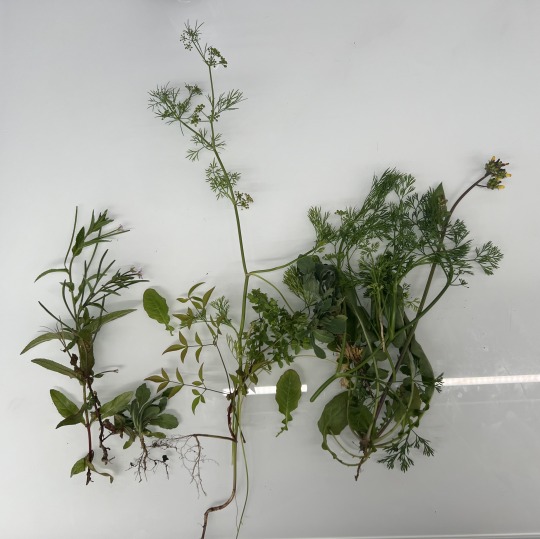
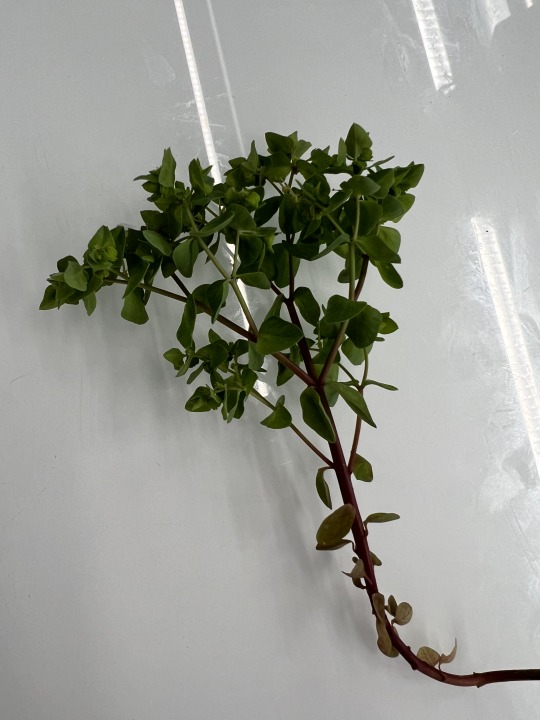
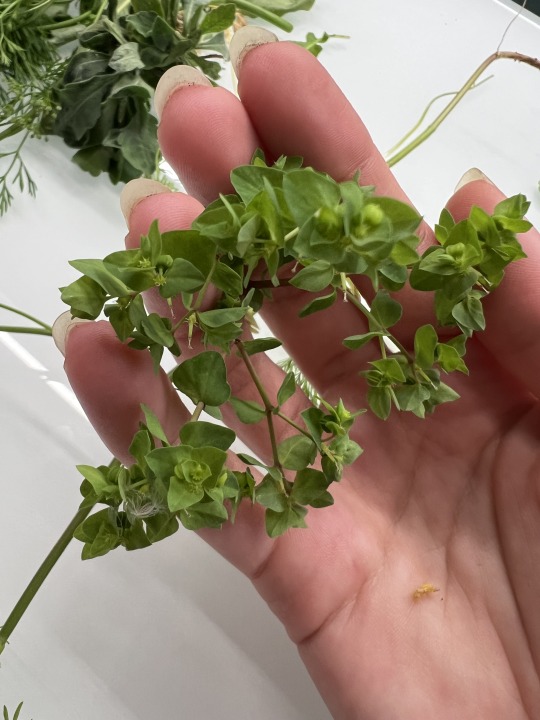
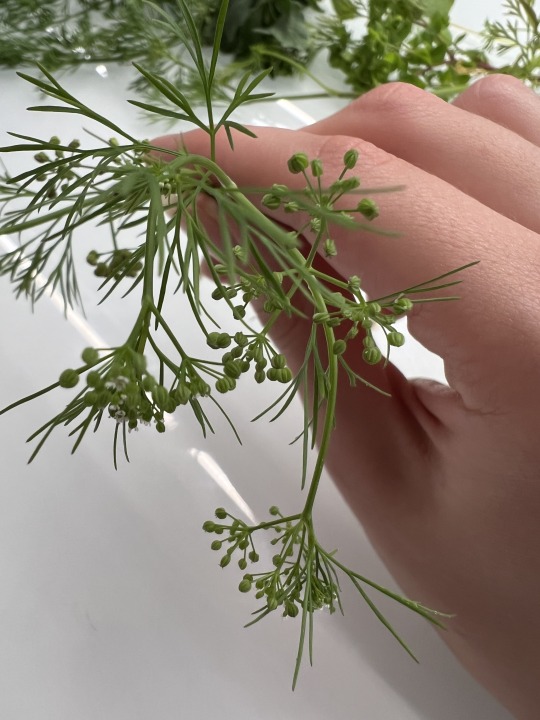

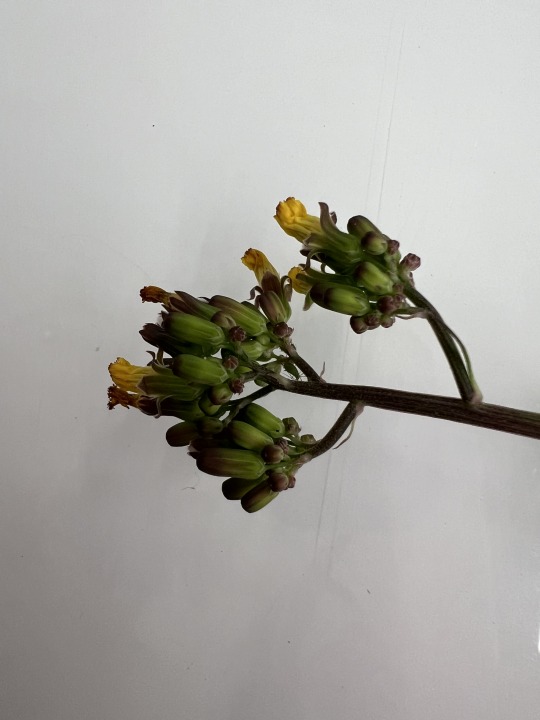
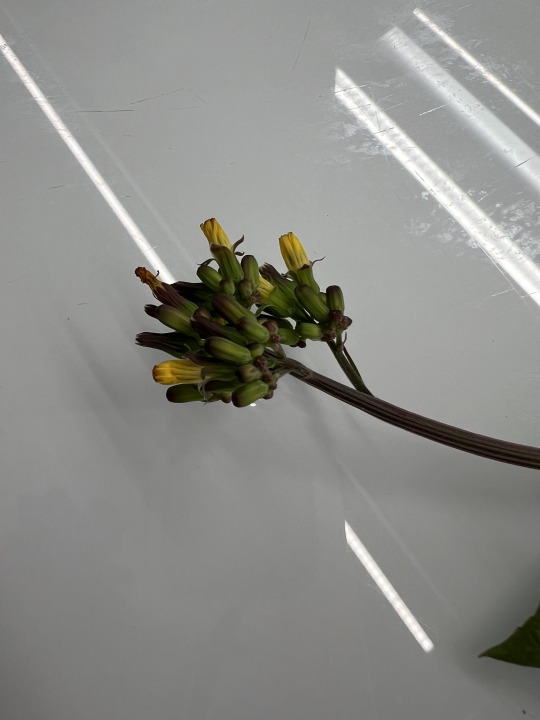

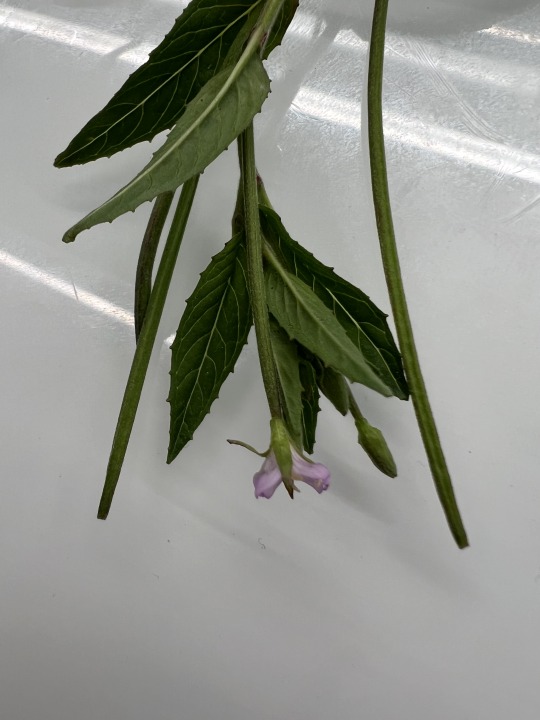
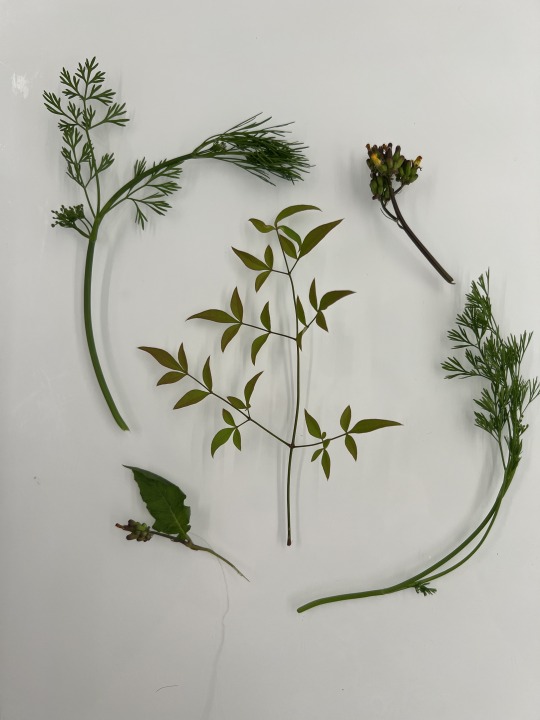
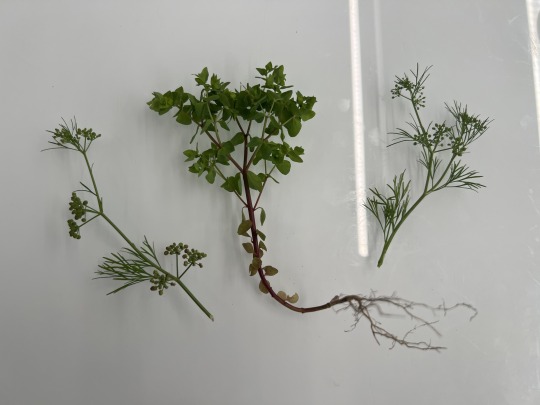
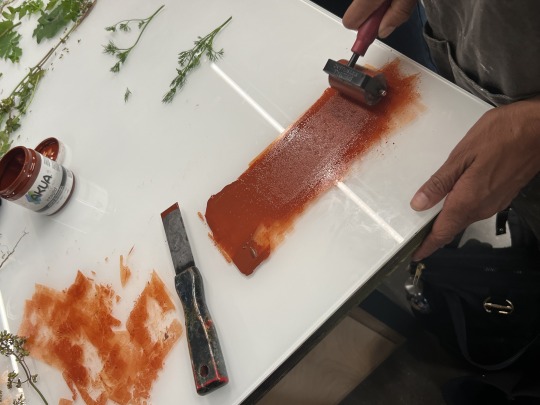


Final prints
Row 1-2: Ghosts of a Herbarium: Euphorbia peplus (Petty Spurge) and Cyclospermum Leptophyllum (Marsh Parsley)
Row 3-5: Ghosts of a Herbarium: Sprig of Nandina domestica (Heavenly Bamboo) embraced by Cyclospermum Leptophyllum (Marsh Parlsey) and Youngia japonica (Oriental False Hawksbeard)
Row 6: Both monoprints alongside each other
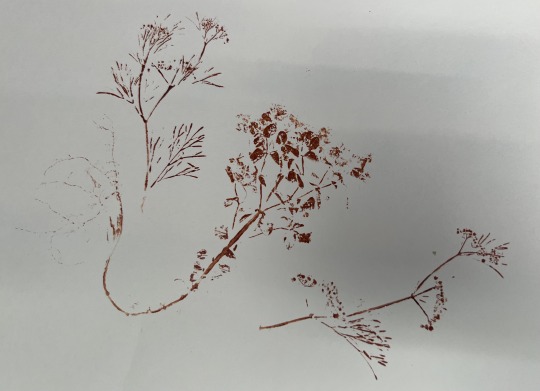
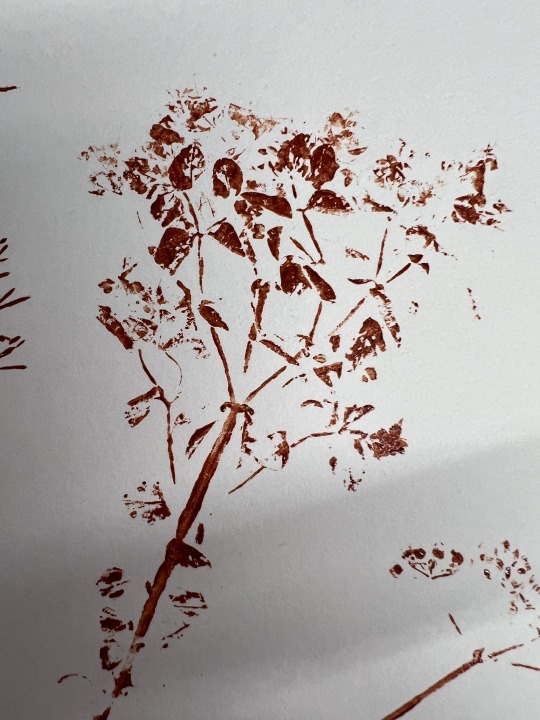
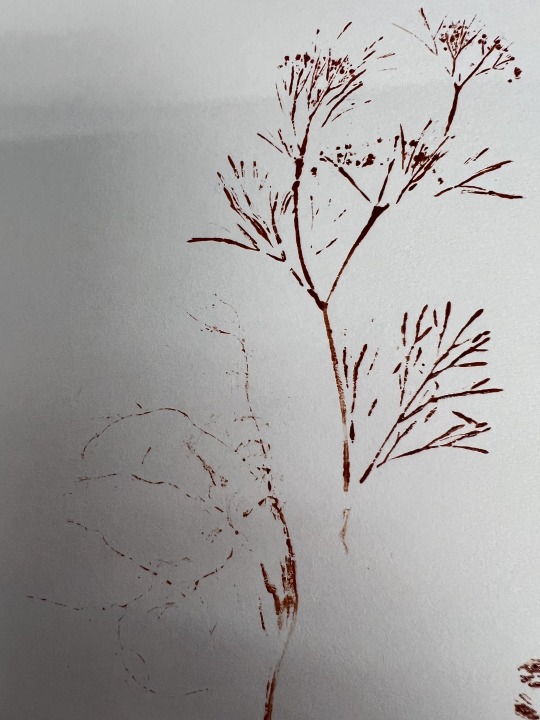
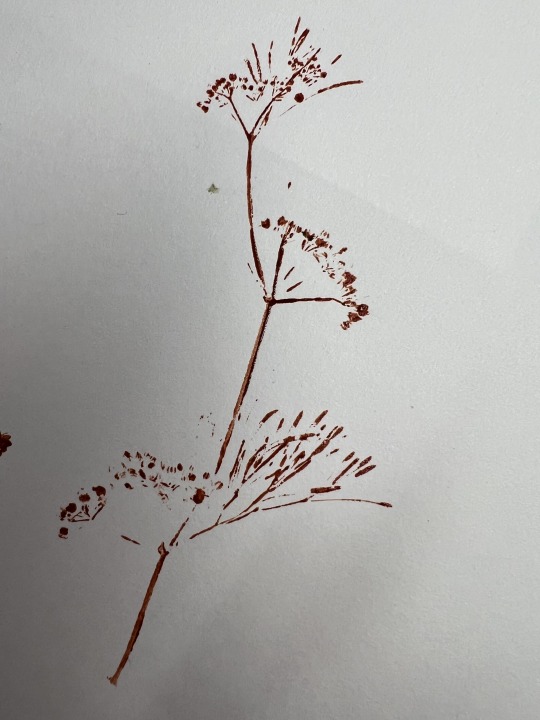
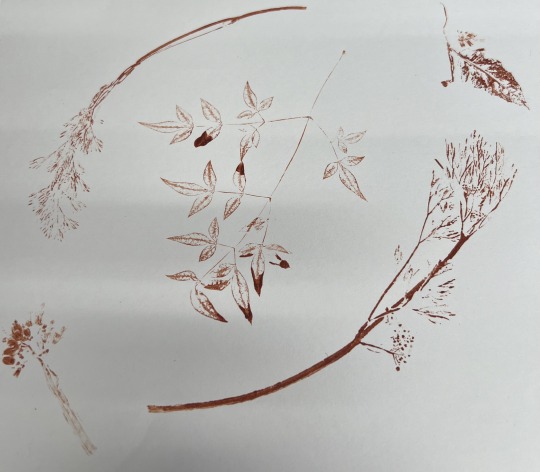
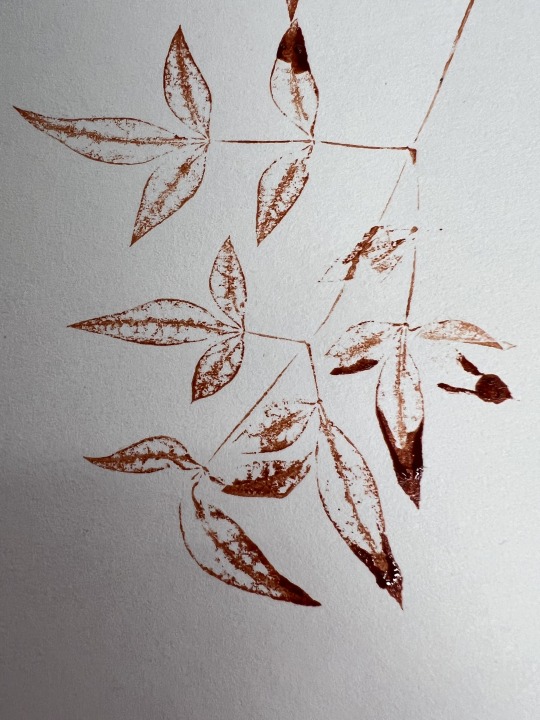

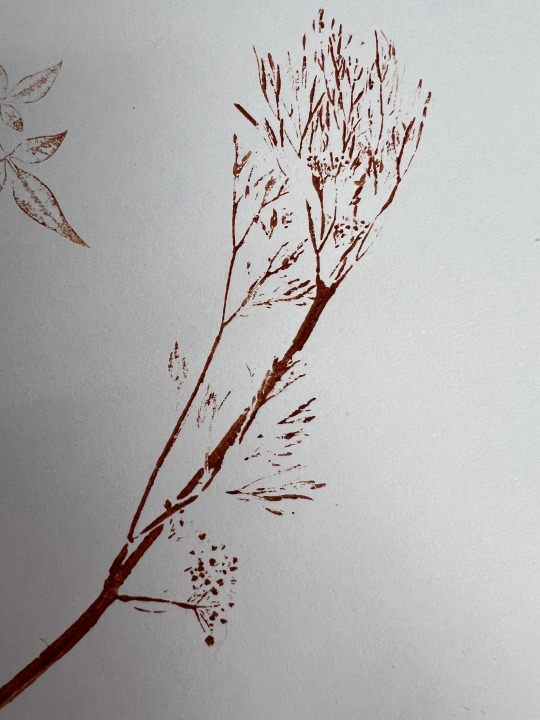



#sca projects#thingstonoteforfutureprojects#printmedia#aa sca yr 3 sem 2 week 7#botanical art#studio exercises
4 notes
·
View notes
Text
Maintaining Digestive Health with Age: Key Lifestyle Adjustments

As we grow older, maintaining digestive health becomes increasingly important. The way our digestive systems work can be affected by age-related changes in the body as well as lifestyle choices. You can maintain the integrity of your general health and gut health by being aware of these changes and making the necessary changes. For expert advice, you can consult the top 10 gastroenterologist in Surat, who specialize in digestive health across all age groups. Let's explore some crucial advice for maintaining optimal gut health as you age.
Why Digestive Health Changes with Age
With age, several factors can contribute to changes in digestive health, such as:
Slower Digestive Process: The muscles in your digestive tract may weaken, slowing the movement of food and leading to issues like constipation.
Reduced Enzyme Production: The body may produce fewer enzymes needed to digest food, which can cause bloating or indigestion.
Medication Side Effects: Many older adults take medications that can affect the digestive system, leading to discomfort or other issues.
Lifestyle and Diet: Sedentary habits and a lack of fiber in the diet are common contributors to poor digestive health.
The first step in taking preventative action to preserve the health of your digestive system is recognizing these changes.
Key Lifestyle Adjustments for Digestive Health
Here are some practical strategies to keep your digestive system in good shape as you age:
1. Eat a Balanced Diet
A healthy diet rich in nutrients is crucial for maintaining a strong digestive system.
Focus on Fiber: Foods like whole grains, fruits, and vegetables help regulate bowel movements and prevent constipation.
Stay Hydrated: Drinking plenty of water aids digestion and helps keep the digestive tract functioning smoothly.
Limit Processed Foods: These are often high in fat, sugar, and salt, which can slow digestion and cause inflammation.
Incorporate Probiotics: Yogurt, kefir, and other fermented foods are excellent sources of good bacteria that support gut health.
2. Stay Active
Physical activity is not only good for overall health but also plays a crucial role in maintaining digestive health.
Exercise Regularly: Activities like walking, yoga, and swimming can stimulate digestion and reduce the risk of constipation.
Improve Posture: Sitting up straight during and after meals helps food move through the digestive tract more effectively.
3. Manage Stress
Chronic stress can negatively impact your digestive system, leading to issues like acid reflux or irritable bowel syndrome (IBS).
Practice Relaxation Techniques: Deep breathing, meditation, and mindfulness can lower stress levels and improve digestion.
Maintain a Regular Schedule: Eating meals at the same times each day helps regulate your digestive system.
4. Get Regular Check-Ups
As you age, it’s essential to stay proactive about your digestive health by consulting with a specialist.
Screenings and Tests: Regular check-ups, including screenings for colon cancer or other gastrointestinal conditions, can help detect problems early.
Consult Experts: A gastroenterologist in Surat can provide personalized advice and treatment for maintaining your digestive health.
Common Digestive Issues in Older Adults
Here are some common digestive issues that aging individuals may face, along with tips on managing them:
1. Constipation
Causes: A lack of fiber, dehydration, or reduced physical activity.
Solutions: Increase your fiber intake, stay hydrated, and exercise regularly.
2. Acid Reflux
Causes: Weakened muscles at the esophagus-stomach junction.
Solutions: Eat smaller meals, avoid lying down after eating, and limit trigger foods like caffeine and spicy dishes.
3. Diverticulosis
Causes: Small pouches form in the colon due to a low-fiber diet.
Solutions: Increase fiber intake and avoid processed foods.
4. Lactose Intolerance
Causes: Reduced production of lactase, the enzyme that digests lactose.
Solutions: Choose lactose-free dairy options or use lactase enzyme supplements.
Tips for Long-Term Gut Health
Here are some additional lifestyle adjustments to consider:
Avoid Overeating: Large meals can overwhelm your digestive system. Opt for smaller, more frequent meals instead.
Chew Thoroughly: Proper chewing breaks food into smaller particles, making it easier to digest.
Limit Alcohol and Caffeine: These substances can irritate the digestive tract and cause discomfort.
Quit Smoking: Smoking has been linked to several digestive disorders, including heartburn and ulcers.
When to Seek Help
It’s essential to recognize when it’s time to consult a professional. Symptoms such as persistent abdominal pain, changes in bowel habits, unexplained weight loss, or difficulty swallowing should not be ignored. A consultation with one of the top 10 gastroenterologist in Surat can provide clarity and peace of mind.
Conclusion
Maintaining digestive health as you age requires a proactive approach and thoughtful lifestyle adjustments. A balanced diet, regular physical activity, stress management, and periodic check-ups are all key to a healthy gut. By incorporating these changes into your routine and seeking guidance from specialists, you can ensure your digestive system continues to function optimally.
Your digestive health is a cornerstone of your overall well-being, so take the necessary steps to keep it strong and resilient, no matter your age.
#digestive health#digestion#gut health#health#gastrologist#stomach problems#healthylifestyle#digestive problems
2 notes
·
View notes
Text
How Sugar and Processed Foods Impact Your Health
In today’s fast-paced world, sugar and processed foods have become staples in many diets. While convenient and often tasty, these foods can have significant negative effects on your health. Understanding their impact is crucial for making informed dietary choices.
What Are Processed Foods?
Processed foods are items that have been altered from their natural state for convenience, taste, or shelf life. Examples include packaged snacks, sugary cereals, soft drinks, frozen meals, and fast food.
These products are often high in added sugars, unhealthy fats, and sodium, while being low in essential nutrients like fiber and vitamins.
The Role of Sugar in Your Diet
Sugar, especially added sugar, is a major ingredient in many processed foods. Added sugars are those that are not naturally occurring in food, such as the sugar in fruits.
They include sweeteners like high-fructose corn syrup, white sugar, and honey added during processing.
The World Health Organization (WHO) recommends that added sugars make up less than 10% of your daily caloric intake. However, many people consume far more, leading to various health risks.
The Health Impacts of Sugar and Processed Foods
1. Weight Gain and Obesity
Sugary and processed foods are often calorie-dense and low in satiety. This means they don’t fill you up as effectively as whole, nutrient-dense foods. Overconsumption of these items can lead to weight gain and obesity, which are risk factors for numerous diseases, including heart disease and diabetes.
2. Increased Risk of Type 2 Diabetes
Excess sugar consumption can lead to insulin resistance, a condition where your body’s cells become less responsive to insulin. Over time, this can result in elevated blood sugar levels and eventually type 2 diabetes. Studies consistently show a strong correlation between sugary beverage consumption and diabetes risk.
3. Heart Health Issues
A diet high in sugar and processed foods can increase triglycerides, lower HDL (good cholesterol), and raise LDL (bad cholesterol), all of which are risk factors for heart disease. Additionally, these foods are often high in trans fats and sodium, which can contribute to hypertension and other cardiovascular problems.
4. Digestive and Gut Health Problems
Processed foods lack dietary fiber, which is essential for a healthy gut. Fiber helps regulate digestion, prevents constipation, and supports beneficial gut bacteria. A low-fiber diet can lead to gastrointestinal issues and increase the risk of diseases like colorectal cancer.
5. Poor Mental Health
Emerging research suggests a link between diet and mental health. Diets high in sugar and processed foods have been associated with increased rates of depression and anxiety. The spikes and crashes in blood sugar levels can affect mood stability, energy levels, and cognitive function.
6. Inflammation and Chronic Diseases
Added sugars and artificial ingredients in processed foods can trigger inflammation in the body. Chronic inflammation is linked to a range of health issues, including arthritis, autoimmune diseases, and even cancer.
How to Reduce Sugar and Processed Food Intake
Read Labels Carefully
Look for hidden sugars in ingredients lists. Common terms include high-fructose corn syrup, maltose, dextrose, and sucrose.
Opt for Whole Foods
Choose fresh fruits, vegetables, whole grains, and lean proteins over packaged and processed alternatives.
Cook at Home
Preparing meals at home gives you control over ingredients and portion sizes.
Hydrate Wisely
Replace sugary beverages like sodas and energy drinks with water, herbal teas, or infused water for flavor.
Plan Your Meals
Having a meal plan can help you avoid the temptation of convenience foods.
Limit Fast Food
Meta Description: Discover how sugar and processed foods impact your health, leading to issues like weight gain, diabetes, and heart disease. Learn tips for reducing their intake for a healthier lifestyle.
When dining out, opt for healthier options and avoid fried or sugary items.
Conclusion
Sugar and processed foods can have a detrimental impact on your health, contributing to a range of issues from obesity and diabetes to mental health problems.
While it’s okay to indulge occasionally, prioritizing a diet rich in whole, natural foods is key to long-term well-being.
By making small, sustainable changes, you can significantly improve your overall health and quality of life.
youtube
3 notes
·
View notes
Text
What is an Injectable?

Injectables are medications delivered directly into the body using a syringe or needle. This method allows for the medication to enter the bloodstream or tissues rapidly, bypassing the digestive system. Unlike oral medications, which must be absorbed through the gastrointestinal tract, injectables deliver drugs directly to their target, making them effective for conditions requiring swift action or high precision.
Types of Injectable
Injectable comes in various forms, each designed for specific purposes and patient needs. Here’s a breakdown of the main types:
Intravenous (IV) Injections: These are administered directly into the veins, allowing for immediate absorption and action. IV injectables are commonly used in hospitals for the rapid delivery of medications, fluids, and nutrients.
Intramuscular (IM) Injections: These are given into the muscle tissue, where the medication is absorbed more slowly than with IV injections but faster than with subcutaneous injections. IM injectables are often used for vaccines and hormone treatments.
Subcutaneous (SC) Injections: Administered into the fat layer beneath the skin, subcutaneous injections are used for medications that require a slower, sustained release. Insulin for diabetes and certain vaccines are typical examples.
Intradermal Injections: These are injected just beneath the outer layer of the skin. Intradermal injectables are used for allergy tests and tuberculosis screening.
Depot Injections: These are a form of IM injection designed for a slow, extended release of medication over time. They’re often used for contraceptives and antipsychotic medications.
What are the Common Uses of an Injectable?
Injectables serve a variety of medical purposes. Here are some of the common uses:
Vaccinations: Many vaccines are delivered via injection to provide immunity against various diseases. This method ensures that the vaccine is effective and provides quick protection.
Pain Management: Injectables are used to deliver pain relief medications, such as morphine or lidocaine, directly to the site of pain or into the bloodstream for systemic relief.
Hormone Replacement: Certain hormones, like testosterone or insulin, are administered via injection to manage conditions such as diabetes and hormone deficiencies.
Chemotherapy: Many cancer treatments are delivered through injections to target cancer cells directly and minimize the impact on healthy tissues.
Emergency Medications: In emergencies, an injectable can deliver lifesaving medications rapidly, such as adrenaline for severe allergic reactions or epinephrine for cardiac arrest.
What are the Advantages of Injectable Medications Over Oral Medications?
An injectable offers several distinct advantages compared to oral medication:
Rapid Absorption: Injectables bypass the digestive system, leading to faster absorption and quicker therapeutic effects. This is crucial in emergencies or when immediate relief is needed.
Higher Bioavailability: Injectables deliver a higher concentration of the medication directly into the bloodstream, ensuring that a greater portion of the drug reaches its intended target.
Precision and Control: Injectables allow for precise dosing and can be administered in a controlled manner, which is especially beneficial for medications requiring accurate dosing.
Bypassing Digestive Issues: For patients with gastrointestinal issues, oral medications may not be absorbed properly. Injectables bypass this problem, providing a reliable alternative.
Long-Term Treatment: Some injectables are designed for slow release, allowing for less frequent dosing and improved patient adherence to long-term treatment plans.
Are Injectables Safe?
Injectables are generally safe when administered correctly, but like all medical procedures, they come with potential risks. Here’s what you need to know:
Injection Site Reactions: Local reactions such as redness, swelling, or pain at the injection site can occur. These are normally mild and resolve on their own.
Allergic Reactions: Some patients may have allergic reactions to the injectable medication or the substances used in the injection. It’s important to monitor for signs of an allergic reaction and seek medical advice if symptoms occur.
Infection Risk: Any injectable carries a risk of infection if proper hygiene is not maintained. It’s important to use sterile needles and follow infection control protocols.
Proper Administration: Injectables should be administered by trained healthcare professionals to minimize complications and ensure correct dosing.
If you experience any unusual symptoms or have concerns about the safety or administration of injectables, it’s essential to consult your healthcare provider for personalized advice and care.
Final Thoughts
Injectables play a crucial role in modern medicine, offering rapid, precise, and effective delivery of medications. Whether used for vaccines, pain management, or chronic conditions, they provide essential benefits that oral medications may not. Understanding the types, uses, advantages, and safety considerations of an injectable can help patients and healthcare providers make informed decisions about treatment options.
For top-quality injectables that adhere to the highest global standards, consider Armein Pharmaceuticals Pvt. Ltd. As a leading injectable manufacturer in India, Armein Pharmaceuticals delivers superior injectable products worldwide, ensuring that patients receive the best care possible.
Feel free to explore our range of injectable products and experience the excellence that Armein Pharmaceuticals brings to global healthcare.
2 notes
·
View notes
Text
The Impacts of Pollution on Human Health
Waste generation in low/high-income areas and its impacts.

It is not a secret that plastic and toxic chemical pollution due to improper waste disposal in our environment threatens our health and safety. In many places, garbage cannot be properly disposed of because of unsustainable waste disposal systems, which will pollute the water, soil, and air. Waste dumpsites, especially in rural low- and middle-income communities worldwide, are at their highest with unregulated trash. Most of the unregulated plastic pollution on land will eventually seep into the soil, and others will find their way down to bodies of water, infiltrating ocean ecosystems. Due to the inaccessibility of a reliable waste management system, many people in these communities suffer from exposed methane and carbon dioxide emissions, diseases, microplastics, and pollutants.

Although the waste output of low- to middle-income communities will be much less than those in high-income neighborhoods, without a well-funded waste management system and access to compostable, biodegradable, environmentally friendly products, their society will remain in plastic waste. Regardless, many of these communities try to eliminate the garbage by uncontrolled burning and waste dumping, but these methods are not sustainable for themselves or the Earth's future.
Burning plastic trash instead of properly disposing of it or using techniques to limit the waste output, such as recycling or reusing, will result in black carbon and poor air quality, elevating the risk of respiratory diseases, cancer, and death. According to the Pan American Health Organization, nearly "7 million premature deaths are attributable to air pollution in 2016," and "about 88% of these deaths occur in low and middle-income countries."
Waste dumping results in plastic pollution in the environment, which "pose both physical (e.g., entanglement, gastrointestinal blockage, reef destruction) and chemical threats (e.g., bioaccumulation of the chemical ingredients of plastic or toxic chemicals sorbed to plastics) to wildlife and the marine ecosystem."
Though their methods may not be feasible in the long run, only government environmental programs and agencies can enact real change in these communities with funded systems and innovative ways to transport trash in and out of rural areas. Education on composting, reducing, reusing, and recycling may also help create a better environment.
Despite the large amounts of pollution attributed to the low- and middle-income communities' unsustainable waste systems, the continual plastic pollution is mostly because of the high production of plastic in growing industries in China, North America, and Europe. With easy access to waste-generating goods, the pollution problem becomes more prevalent in these countries. This foreshadows other factors that play a role in the plastic pollution issue, such as the illegal dumping of plastic waste, littering, and mismanagement of plastics; in 2016, the United States ranked #1 in plastic waste generation, as shown in the photo below.
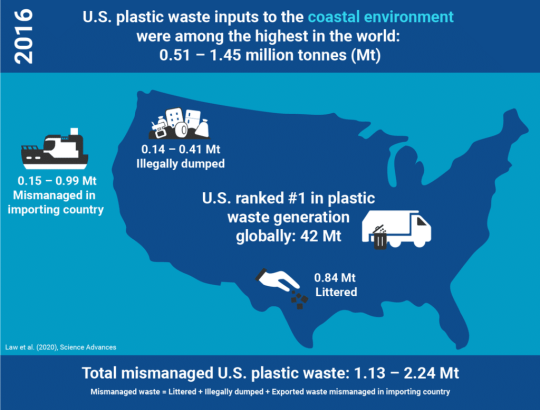
Source: NPG, 2020
With the ever-growing amount of mismanaged plastic disposed of in our environment, the effects continue to show in research studies, revealing that it threatens the health of humans globally.
The diagram created by CIEL below demonstrates the multitudes of ways that exposure to pollution can affect human health.

More than ever, we should beware of its effects and stop producing single-use plastics that will only create more problems when disposed of. Learning and educating ourselves on Earth and becoming aware of the adverse effects will allow us, as a community, to grow one step closer to a more sustainable planet.
Sources
Mihai, F., Gündoğdu, S., Markley, L. A., Olivelli, A., Khan, F. R., Gwinnett, C., Gutberlet, J., Meidiana, C., Elagroudy, S., Ishchenko, V., Penney, S., & Lenkiewicz, Z. (2022). Plastic Pollution, Waste Management Issues, and Circular Economy Opportunities in Rural Communities. Sustainability, 14(1), 20. https://doi.org/10.3390/su14010020
Vinti, G., & Vaccari, M. (2022). Solid Waste Management in Rural Communities of Developing Countries: An Overview of Challenges and Opportunities. Clean Technologies, 4(4), 1138-1151. https://doi.org/10.3390/cleantechnol4040069
Zhou, B., Qi, F., Riaz, M. F., & Ali, T. (2022). An Analysis of the Factors behind Rural Residents’ Satisfaction with Residential Waste Management in Jiangxi, China. International Journal of Environmental Research and Public Health, 19(21). https://doi.org/10.3390/ijerph192114220
#climate justice#epa#environmentalism#earth#environmetalists#environment#enviromental#climate change#reduce reuse recycle
13 notes
·
View notes
Text
Astrology and Digestive Health: The Root Causes of Stomach Issues
Astrology, often associated with personality traits and future predictions, can also shed light on health concerns, including digestive issues. The alignment of celestial bodies at the time of birth is believed to influence one's physical well-being, including the digestive system. By understanding the astrological indicators related to stomach health, individuals can uncover potential root causes of their digestive issues and take proactive steps towards healing and maintaining overall well-being.
How Astrology Influences Digestive Health?
● The Sign of Cancer and the Moon: In astrology, the digestive system, including the stomach and intestines, is governed by the sign of Cancer and the celestial body, the Moon. The Moon's influence on bodily fluids, rhythms, and emotional balance plays a significant role in digestive health. An imbalance or affliction to the Moon in the birth chart can indicate potential digestive disturbances and mood-related issues.
● Mercury and Nervous System: Mercury, representing communication and intellect, also governs the nervous system and digestive functions in astrology. Afflictions with Mercury or its placement in challenging houses may lead to issues like indigestion, acid reflux, or nervous stomach. The nervous system's role in digestion underscores the connection between mental well-being and gastrointestinal health.
● The Sixth House and Health: Astrologically, the sixth house in the birth chart relates to health and well-being, including digestive health. Malefic planets positioned in the sixth house may indicate susceptibility to digestive disorders such as gastritis, ulcers, or food intolerances. Understanding the astrological influences on the sixth house can provide insights into an individual's predisposition to digestive issues and potential health challenges.
● Planetary Afflictions: The positioning and aspects of planets like Mercury, the Moon, and Jupiter in an individual's birth chart can indicate potential digestive health issues. Afflictions with these planets, such as conjunctions with malefic planets or placement in adverse houses, may disrupt digestive functions and lead to ailments like acidity, indigestion, or irritable bowel syndrome (IBS).
● Transit Influences: Periodic transits of malefic planets like Saturn or Rahu over sensitive points in an individual's birth chart can trigger digestive disturbances. These transits may coincide with flare-ups of existing digestive issues or the onset of new challenges. By understanding the timing of these transits through astrology, individuals can take proactive measures to support digestive health during vulnerable periods.
Common Astrological Indicators of Digestive Issues
● Afflictions to the Moon: The Moon represents the mind, emotions, and bodily fluids, including those involved in digestion. Afflictions such as conjunctions, squares, or oppositions involving malefic planets to the Moon in the birth chart may indicate susceptibility to digestive disturbances. Emotional stress or mood imbalances can exacerbate these issues, highlighting the interconnectedness between mental and digestive health.
● Challenged Mercury Placement: Mercury governs communication, intellect, and the nervous system, which influences digestive processes. Afflictions to Mercury, such as retrogradation or placement in debilitated signs or houses, can lead to imbalances in gut flora, resulting in conditions like irritable bowel syndrome (IBS) or nervous stomach. Understanding Mercury's position and aspects in the birth chart can offer insights into an individual's predisposition to digestive disorders.
● Malefic Influence on the Sixth House: The Sixth House governs health, diseases, and bodily ailments, including digestive issues. Malefic planets occupying or aspecting the sixth house may indicate vulnerability to stomach problems, such as gastritis, acid reflux, or digestive ulcers. Analysing the condition of the sixth house in the birth chart provides valuable information about an individual's digestive health and potential challenges they may encounter.
Astrological Remedies for Digestive Health
● Gemstone Therapy: Certain gemstones, such as emeralds and pearls, are associated with improving digestive health by balancing planetary energies. Wearing these gemstones as per astrological recommendations can help alleviate digestive disturbances and promote overall well-being. Emerald, linked with Mercury, aids in enhancing digestion and assimilation of nutrients, while pearl, associated with the Moon, supports emotional balance and gut health.
● Mantra Chanting: Reciting specific mantras, known as mantra therapy, can harmonise planetary influences and promote digestive health. Mantras dedicated to Mercury, such as the "Om Budhaya Namaha" mantra, or those honouring the Moon, like the "Om Somaya Namaha" mantra, can be chanted regularly to appease these planetary energies and address digestive imbalances. Incorporating mantra chanting into daily practice can have a calming effect on the mind and body, supporting optimal digestion.
● Yoga and Pranayama: Practicing yoga asanas and pranayama techniques tailored to balance the energies of Mercury and the Moon can benefit digestive health. Poses like Paschimottanasana (Seated Forward Bend) and Bhujangasana (Cobra Pose) stimulate abdominal organs and improve digestion, while pranayama techniques like Nadi Shodhana (Alternate Nostril Breathing) promote mental clarity and emotional balance. Integrating these practices into a daily routine can enhance overall well-being and alleviate digestive discomfort.
The Bottom Line
Astrology offers a unique perspective on digestive health, emphasising the interconnectedness between celestial influences and bodily functions. By recognising the astrological indicators related to stomach issues and implementing appropriate remedies, individuals can embark on a journey towards improved digestive well-being and overall health. Integrating astrological insights with conventional medical approaches empowers individuals to address digestive concerns holistically, fostering balance, harmony, and vitality in body and mind.
2 notes
·
View notes
Text
average health section of a dog breed Wikipedia page is like [breed] is considered relatively healthy. However they have a predisposition to hip and elbow dysplasia, autoimmune conditions, cancer, progressive retinal atrophy, gastrointestinal problems, heart failure and haemophilia. A condition known as Sudden unexplained painful organ failure exploding death disease is prevalent in some lines.
3 notes
·
View notes
Text
10 Fun Facts About Sustainability and Climate Change

10 Fun Facts About Sustainability and Climate Change
Did you know that...
The average American produces about 4.4 pounds of trash per day?That's a lot of waste! By recycling and composting, we can reduce the amount of trash that ends up in landfills and incinerators.
The United States is the second-largest emitter of greenhouse gases in the world? China is the largest emitter. We can all do our part to reduce our carbon footprint by making small changes in our daily lives, such as driving less, using less energy, and eating less meat.
The world's forests are disappearing at an alarming rate?Every year, we lose about 12 million acres of forest. Forests are important for many reasons, including absorbing carbon dioxide, providing habitat for wildlife, and regulating the climate.
Overfishing is a major problem?Overfishing is when we catch more fish than the population can sustain. This can lead to the collapse of fish populations and the loss of biodiversity.
Water pollution is a serious issue? Water pollution can come from a variety of sources, such as agricultural runoff, industrial waste, and sewage. It can cause a variety of health problems, including gastrointestinal illness, reproductive problems, and cancer.
Climate change is a real and serious threat? Climate change is caused by the release of greenhouse gases into the atmosphere. These gases trap heat, which is causing the Earth's temperature to rise. Climate change is already having a negative impact on the planet, such as more extreme weather events, rising sea levels, and melting glaciers.
We can all make a difference in the fight against climate change? Even small changes can make a big difference. By making small changes in our daily lives, we can help to reduce our carbon footprint and fight climate change.
There are many things we can do to live more sustainably? We can recycle and compost, drive less, use less energy, eat less meat, and support sustainable businesses. By making small changes in our daily lives, we can make a big difference for the planet.
We all have a role to play in protecting our planet. By learning about sustainability and climate change, we can make informed choices that will help to create a more sustainable future.
10 notes
·
View notes
Text
Comprehensive Guide to Colonoscopy: Procedure, Benefits, and Expert Care by the best Gastro hospital in Surat

Introduction
When it comes to colonoscopy procedures in Surat, it’s essential to have access to the right resources and medical professionals. We will go deeper into the definition of colonoscopy, how it is performed, its safety profile, the strong justifications for its necessity, and detailed directions on how to be ready for the procedure in this extensive guide.
Finding Expert Care in Surat
When seeking a specialist for colonoscopy, being one of the Best Gastro Hospitals in Surat with a skilled team of gastroenterologists, Vedam Gastro Hospital emerges as the trusted choice. Their team of experienced gastroenterologists specializes in colonoscopy procedures, colon cancer screening, and the diagnosis of various digestive issues. If you’re searching for a dedicated colonoscopy doctor in Surat or comprehensive colon cancer screening in Surat, contact Vedam Gastro Hospital today. Your digestive health is in expert hands, and timely action can be lifesaving. Don’t delay; schedule your colonoscopy at Vedam Gastro Hospital for peace of mind and optimal health. Your journey to digestive wellness starts here.
What is Colonoscopy?
A colonoscopy is a crucial diagnostic technique used to look into the rectum and colon’s inner lining. It makes use of a colonoscope, a lengthy, flexible tube with a tiny camera at the tip. Real-time views of the colon’s interior are provided by this camera, enabling medical practitioners to spot and evaluate anomalies like polyps, tumors, inflammation, or other gastrointestinal problems.
How is Colonoscopy Done?
The method of a colonoscopy is well-trained and exact, and it is typically carried out by a gastroenterologist, a doctor who specializes in the digestive system. The team of highly qualified and experienced gastroenterologists available at Vedam Gastro Hospital considered as one of the Best Stomach Hospitals in Surat excels at carrying out this surgery. To ensure comfort throughout the examination, patients are typically given sedatives. The rectum is used to gently insert the colonoscope, which is then slowly progressed through the colon. The colonoscope’s camera tip delivers high-definition images to a monitor, enabling the physician to carefully examine the whole colon. If any polyps or abnormal tissues are found, they can be swiftly removed or biopsied while the surgery is being performed.
Is Colonoscopy Safe?
Colonoscopies are known to be safe, especially when done by a qualified medical expert. Although they are uncommon, complications could include mild bleeding, infection, or damage to the colon’s wall. Before the procedure, it is essential to discuss any worries or inquiries with your doctor. You can be confident that the staff at Vedam Gastro Hospital in Surat is committed to explaining the procedure’s advantages and disadvantages in great detail while placing a priority on your health.
Why Should Colonoscopy Be Done?
Colonoscopy is essential for the following reasons:
1.Colon cancer screening: Colonoscopy is one of the best ways to identify and stop colon cancer. Precancerous polyps can be removed before they turn malignant with early detection, potentially saving lives. Colon cancer screening is a specialized service that Vedam Gastro Hospital in Surat excels at providing.
2.Diagnosis of Digestive Problems: Colonoscopy is also helpful in identifying and assessing a variety of digestive disorders, such as Crohn’s disease, ulcerative colitis, and persistent diarrhea. The skilled medical staff at Vedam Gastro Hospital can offer precise diagnosis and specialized treatment regimens for various problems.
3.Keeping an eye on pre-existing conditions: Patients with a history of colorectal problems or colon cancer might need routine colonoscopies to keep an eye on their health and ensure early detection.Vedam Gastro Hospital offers comprehensive care for patients with ongoing digestive health concerns, ensuring continuity and consistency in their treatment.
How to Prepare for Colonoscopy?
A successful colonoscopy depends on careful planning:
1.Dietary Restrictions: At Vedam Gastro Hospital, one of the best stomach specialists in Surat, will provide you detailed dietary guidelines. This usually entails following a clear liquid diet for a day or two prior to the treatment.
2.Medication Modifications: Prior to the colonoscopy, some medications may need to be modified or temporarily stopped. To ensure a successful surgery, discuss this with your doctor at Vedam Gastro Hospital.
3.Colon cleansing: To fully cleanse your colon, a specific laxative solution will be administered to you. To ensure a clear vision during the procedure, it’s imperative to strictly follow the offered directions.
4.Make Travel Arrangements: You won’t be able to drive yourself home after the procedure due to anesthesia.
3 notes
·
View notes
Text
The Cultural Capital of AngloWest Africa - Ghana 🇬🇭
Ghana in 2021, the estimated population of Ghana is approximately 31.4 million people. The country has a relatively young population, with approximately 57% of the population under the age of 25. The population is also growing rapidly, with an annual population growth rate of 2.15%.

The ethnic composition of Ghana is diverse, with over 100 different ethnic groups. The largest ethnic group is the Akan, who make up around 47% of the population. Other significant ethnic groups include the Mole-Dagbon, Ewe, Ga-Adangbe, and Gurma.
The official language of Ghana is English, but there are many other languages spoken throughout the country, including Akan, Ewe, and Twi. The majority of the population is Christian, with approximately 71% of Ghanaians identifying as Christian. There is also a significant Muslim population, making up around 18% of the population, and a smaller population of traditional African religion practitioners.
Ghana has a relatively high urbanization rate, with approximately 56% of the population living in urban areas. The capital city, Accra, is the largest city in Ghana, with a population of over 2.2 million people. Other major cities in Ghana include Kumasi, Tamale, and Sekondi-Takoradi.

The median age in Ghana is approximately 21 years, and the life expectancy at birth is around 65 years. The literacy rate in Ghana is relatively high, with approximately 76% of the population over the age of 15 being able to read and write.
Major Health Conditions
Most prevalent health conditions in Ghana include:
Malaria: Malaria is a major public health problem in Ghana, accounting for approximately 29% of all outpatient visits, 25% of all admissions, and 22% of all deaths.
Acute Respiratory Infections (ARI): ARI is a leading cause of morbidity and mortality in Ghana, particularly among children under five years old.
Diarrheal Diseases: Diarrheal diseases are common in Ghana, with an estimated 13% of deaths in children under five years old attributed to diarrhea.
Tuberculosis (TB): TB is a major health problem in Ghana, with an estimated 14,000 new cases reported in 2020.
Neglected Tropical Diseases (NTDs): NTDs, including schistosomiasis, lymphatic filariasis, and onchocerciasis, are endemic in Ghana and affect millions of people.
Non-communicable Diseases (NCDs): NCDs, such as cardiovascular diseases, diabetes, and cancer, are on the rise in Ghana due to changing lifestyles and increasing urbanization.
Acne or Pimple or Blemish
Acne is a common skin condition that affects millions of people worldwide, including those living in Ghana. However, there is limited research available on the prevalence and epidemiology of acne and pimples in Ghana specifically.
One study conducted in Ghana in 2019 examined the prevalence of acne and associated risk factors among students at a tertiary institution. The study found that the overall prevalence of acne was 59.5%, with females being more affected than males. The study also identified several risk factors for acne, including stress, family history, and certain dietary habits.
Another study conducted in 2017 investigated the prevalence of acne and its impact on the quality of life of Ghanaian students. The study found that 67.9% of the participants had acne, and that acne significantly impacted their quality of life in terms of social interactions and self-esteem.
Overall, while limited research exists on the prevalence and epidemiology of acne and pimples in Ghana, available studies suggest that acne is a relatively common skin condition among Ghanaians, particularly among young people. Further research is needed to better understand the epidemiology and impact of acne in Ghana and to develop effective prevention and treatment strategies.

Acid Reflux - The sour fluid
Studies have reported a high burden of gastrointestinal (GI) diseases in sub-Saharan Africa, including Ghana. According to a systematic review published in 2016, the most common GI disorders in sub-Saharan Africa are infectious diarrhea, helminth infections, and viral hepatitis, among others.
Furthermore, a study published in the West African Journal of Medicine in 2010 reported that upper GI symptoms, including heartburn and acid regurgitation, were prevalent among Ghanaians. The study also found that the use of non-steroidal anti-inflammatory drugs (NSAIDs) was a significant risk factor for upper GI symptoms.
Another study published in the Journal of Gastroenterology and Hepatology Research in 2018 reported a high prevalence of irritable bowel syndrome (IBS) among Ghanaians. The study found that IBS affected 20.7% of the study participants and that females were more affected than males.
Studies suggest that digestive problems are prevalent in Ghana. The most common GI disorders in Ghana are infectious diarrhea, helminth infections, and viral hepatitis. Upper GI symptoms and IBS are also prevalent in Ghana.

Loving thyself is paramount
Male libido problems are not unique to Ghana, as they affect men all over the world. However, there are certain factors specific to Ghana that may contribute to male libido problems, including cultural and societal norms, access to healthcare, and lifestyle factors.
In Ghana, there is a cultural emphasis on masculinity and sexual prowess, which can lead to feelings of shame or inadequacy for men who struggle with low libido. This can make it difficult for men to seek help or talk openly about their issues.
Access to healthcare can also be a barrier for men in Ghana who are experiencing libido problems. Some men may not have access to medical facilities or trained healthcare professionals who can provide appropriate treatment.
Lifestyle factors such as poor diet, lack of exercise, and high levels of stress can also contribute to male libido problems in Ghana. These factors can lead to issues such as obesity, diabetes, and high blood pressure, which are all risk factors for low libido.
To address male libido problems in Ghana, it is important to address these underlying factors. This may involve promoting a more open and accepting attitude towards male sexual health, increasing access to healthcare services, and encouraging healthy lifestyle behaviors. Additionally, healthcare providers can offer treatments such as counseling, medication, and lifestyle interventions to help men overcome their libido problems.

The Size of Prize
The pharmaceutical industry in Ghana has been growing steadily over the years. According to a report by the Ghana Investment Promotion Centre (GIPC), the industry's value was estimated to be around $630 million in 2019, with an annual growth rate of 6.8%. The government of Ghana has been implementing policies to promote the development of the pharmaceutical industry, with the aim of achieving self-sufficiency in drug production.
The pharmaceutical industry in Ghana can be categorized into the following products:
Generic drugs: These are drugs that are not branded and are marketed under their chemical names. They are cheaper than branded drugs and are essential in providing affordable healthcare.
Branded drugs: These are drugs marketed under a brand name and are usually more expensive than generic drugs. They are protected by patents, which give the manufacturer exclusive rights to produce and market them.
Over-the-counter (OTC) drugs: These are drugs that can be bought without a prescription from a healthcare provider. They are usually used to treat common ailments such as headaches, colds, and coughs.
Medical devices: These are instruments, machines, and apparatus used to diagnose, treat, or prevent disease.
The Ghanaian pharmaceutical industry is dominated by local manufacturers who produce generic drugs, with only a few multinational companies operating in the country. The government of Ghana has been implementing policies to promote the development of the pharmaceutical industry, including tax exemptions and incentives for local manufacturers. The industry is also regulated by the Food and Drugs Authority (FDA).
Nature Offers More
The herbal over-the-counter (OTC) products market in Ghana is a significant segment of the country's healthcare industry. Ghana has a rich tradition of herbal medicine, and many Ghanaians rely on traditional herbal remedies to treat various health conditions. The demand for herbal OTC products has been increasing in recent years due to a growing interest in natural and alternative medicine.
Some of the commonly used herbal OTC products in Ghana include herbal teas, capsules, powders, and creams. These products are made from a variety of herbs and plants, such as aloe vera, ginger, neem, moringa, and turmeric. They are marketed as remedies for a range of ailments, including digestive disorders, skin conditions, and respiratory problems.
The herbal OTC products market in Ghana is largely unregulated, and many of these products are sold without proper quality control or safety testing. However, the Ghana Standards Authority has established guidelines for the manufacture, labeling, and packaging of herbal products to ensure quality and safety.

The market for herbal OTC products in Ghana is highly competitive, with many small-scale producers and distributors. However, some larger companies have entered the market, such as Phyto-Riker Pharmaceuticals and Ernest Chemists Limited, which have established themselves as leading manufacturers and distributors of herbal products in Ghana.
Overall, the herbal OTC products market in Ghana is growing, driven by a strong demand for natural and traditional remedies.
The Access Points
There are various distribution channels for over-the-counter (OTC) and fast-moving consumer goods (FMCG) products. Some of these distribution channels include:
Traditional Trade: This involves the use of small independent retailers such as mom-and-pop stores, kiosks, and corner shops. They are typically located in residential areas and are convenient for consumers to access.
Supermarkets/Hypermarkets: These are larger stores that offer a wider range of products and are typically located in commercial areas or shopping malls.

Pharmacies and Drug Stores: These are stores that specialize in the sale of pharmaceutical and healthcare products. They are typically located in urban areas and are often frequented by consumers seeking OTC products.

Direct Selling: This involves the use of a network of independent distributors who sell products directly to consumers. This method is commonly used for products such as cosmetics and personal care items.

Online Retail: With the rise of e-commerce, online retail has become an increasingly popular channel for the distribution of OTC and FMCG products. Online marketplaces such as Jumia, Konga, and Jiji have become prominent players in the Ghanaian retail market.
Wholesalers and Distributors: These are companies that buy products in bulk from manufacturers and sell them to retailers. They are often used by manufacturers to reach a wider market.
The distribution channels for OTC and FMCG products in Ghana are diverse, ranging from traditional trade to online retail. Manufacturers often use a combination of these channels to ensure their products are widely available to consumers.
2 notes
·
View notes